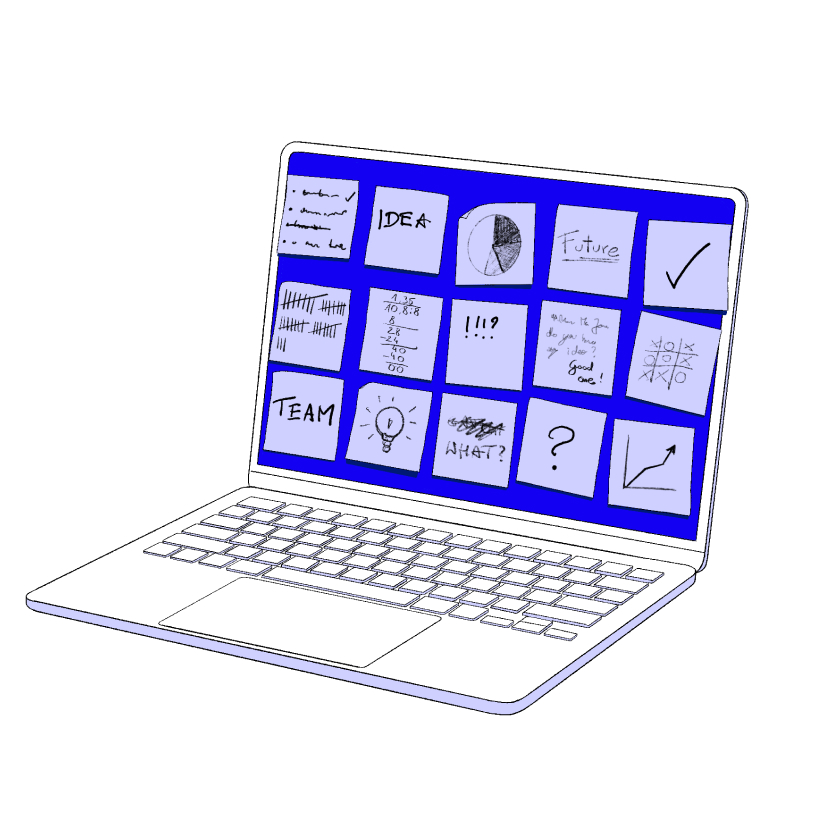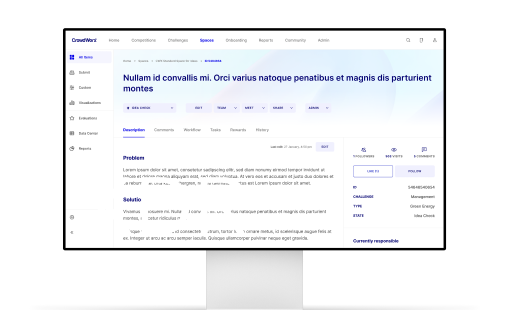Idea Management:
An Introduction

When we talk about idea management, there is often a lot of confusion. For some, idea management equals innovation, for others it is the classic internal suggestion system. Even after decades, no consensus has formed on the term.
Definition of Idea Management
Idea management can best be understood in the context of two more well-defined terms: “innovation” and “internal process improvements”.
Here are 3 simple steps towards understanding idea management:
- Idea management: Activities, rules and decisions that companies perform when managing any kind ideas.
- Innovation: To successfully develop new products and services, a company must be able to manage ideas creatively and intelligently.
- Internal improvements: Here too, management of idea is required but the focus is on internal efficiency, cost savings etc.
Innovation management and suggestion systems differ from each other by the nature of the ideas and the boundaries between both also differ across companies. However, both are based on good idea management.
Building blocks of an Idea Management System
A fully developed innovation strategy should contain the following chapters:
All idea management processes are company-specific. But good idea management always consists of the same components.
- Process: An idea management process is the backbone of idea management. It guides all participants, ideally automatically, through the workflow. A good idea management process runs like a well-oiled machine – almost by itself.
- Responsibilities: Roles in the process must be clearly defined so that process tasks cannot be shifted back and forth. The process connects all roles with each other.
- Evaluation criteria: Ideas must be evaluated quickly, in a fair and clear manner.
- Reporting: A good KPI system shows which types of ideas generate the most benefit, which departments are the most innovative, and which process steps are bottlenecks. These are basic requirements for the operation of an idea management system.
In practice, these four components are complemented by four key success factors.
Key Success Factors in Idea Management
There are four key success factors when setting up an Idea Management:
- Speed: Not every idea has to go through the same process. An agile process is important to maximize implementation speed – but also to avoid ‘process fatigue’ in stakeholders.
- Stakeholders: All stakeholders, whether employees or managers, must be committed, otherwise the idea management will likely fail, since it is a voluntary and decentralized process.
- Implementation: Implementers must be able to implement ideas as quickly as possible, which occasionally requires a short break from their other work duties. The more consistently one does this, the faster one reaps the benefits of ideas.
- Budget: Often the implementation only costs working time. But sometimes also a small budget will be required. If the evaluation shows a high benefit, ideas must not fail because of lack of budget.
Building a successful idea management system
For idea management to work well in practice it must be perceived as a methodological competence in the sense of a capability of the company (capability building).
Companies that have developed these capabilities achieve measurable EBIT successes with their idea management.
The most successful companies understand that it makes no sense to separate ideas into silos like “internal improvements” or “innovations”. Instead, they use flexible idea management processes to collect all ideas in one central innovation hub. The following example showcases such an approach.
Adoption of the Innovation Strategy
Let us take the example of the global automotive supplier MAGNA. In the mid-2010s the CEO launched an initiative to create an integrated ideas and innovation platform called WIN.
The WIN platform manages all ideas and projects, from the smallest ideas from Lean workshops of individual shop floor teams up to big technology innovations.
Everyone has their own area in the WIN platform, but can access the entire network of expertise and ideas and to tap insights across the company and from all levels of innovation.
This is enabled by an IT platform that combines flexible idea management processes with intelligent algorithms and thus increases synergies.
Impact: Since the introduction of the WIN system, MAGNA has grown into the most innovative and versatile automotive supplier worldwide.
Conclusion: Companies that have mastered the methods and tools of idea management are more successful in both innovations and internal improvements.

Using the CrowdWorx Idea Management Platform
With an idea management process, whether for innovations or internal improvements, ideas can be managed quickly, fairly and effectively.
- CrowdWorx software supports idea managers with smart tools, agile processes, and flexible workflows.
- Modern workflows accelerate implementation, minimize costs, and free-up time for the implementation of truly good ideas.
- With intelligent algorithms, the CrowdWorx system connects the right ideas with the right people.
The CrowdWorx platform transforms any idea management system into a well-running machine and frees-up idea managers’ time to create more real value, e.g. by coaching employees or promoting promising ideas.
